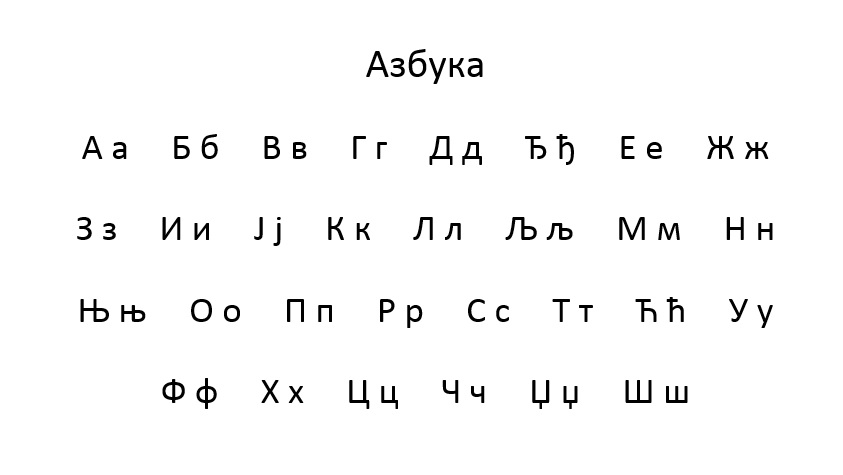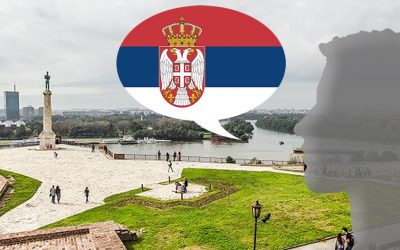4 Serbian Alphabets: Cyrillic, Latin and more
People often wonder what alphabet is used in Serbia: is it Cyrillic or Latin? How do we write in Serbia today? Do you have to learn the Cyrillic script?
There’s a common misconception that the Latin alphabet is used in Croatia, while the Cyrillic is used in Serbia. But the truth is that in Serbia we simultaneously use both scripts and alphabets.
The Serbian children learn both Cyrillic and Latin alphabet and script, both block and handwritten styles, in the first two grades at all primary schools in Serbia.
Do you wonder how we got there and how it all started?
I will illustrate this development through a brief review here, giving you the most important information.
If you happen to dislike history, please jump over to the final section entitled
“Serbian Alphabets Today“.
Glagolitic Alphabet – Glagoljica
Let us look back at the 9th century, when the first Slavic alphabet is believed to be invented. Its creators were probably St Cyril and his brother St Methodius, who used the new writing system to translate the Bible into Old Slavic. Old Slavic or Old Church Slavonic was the first Slavic literary language and was supposed to become the lingua franca of all the Slavs.
The original name of this alphabet was actually most probably Cyrillic! The term “glagoljica” (Glagolitic alphabet) that we use today occurred later. It is derived from the old Slavic verb glagoliti, to talk. From the same root we have the word glagol, which means ‘a verb’ in modern Serbian/Bosnian/Croatian.
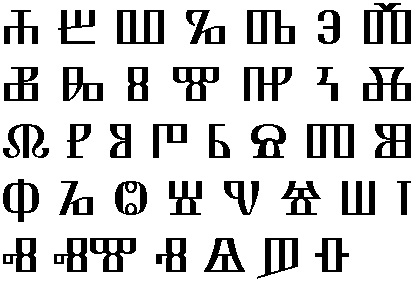
It is not known whether this writing system was constructed on the basis of an older Slavic alphabet. The Glagolitic alphabet is the first Slavic alphabet evidenced by many documents in the entire Slavic world, like the famous Codex Zographensis or Zografsko jevanđelje, today kept at the Russian National Library.
The Old Slavic Cyrillic Alphabet
I suspect that the Glagolitic alphabet was quickly replaced only because it was way too complex and therfore it took huge amounts of time to write all the books (the poor monks used to write by hand before the printing machine was invented). Indeed, it is believed that this alphabet was developed by the Saint Cyril’s disciples in the late 9th century. That is the alphabet we today refer to as Cyrillic, ćirilica.
It is based mostly on the Greek alphabet, and some letters for the specific Slavic sounds are based on the Glagolitic alphabet. There are many manuscripts written in this script, such as Miroslav’s Gospel or Miroslavljevo jevanđelje, written in Montenegro during the late 12th century and today kept at the National Museum of Serbia in Belgrade.

This writing system and the Old Slavic as the literary language were used in the entire Slavic world for centuries, but every writer was unconsciously adding features of his mother tongue, the language of the common people. That is why in the 12th century we have different recensions emerging (for example Russian recension of the Old Slavic or Serbian recension of the Old Slavic).
That is also how Serbia had developed diglossia, or more accurately polyglossia. This is to say that the common people spoke their native language and dialect, while the Church used the Srpskoslovenski language (the Serbian recension of the Old Church Slavic), the Serbian schools in Austro-Hungarian empire were introducing the Russian recension with the teachers and books coming from Russia, while the Serbian intellectuals were speaking and writing the Slavjanoserpski language, a solemn mixture of the common Serbian and the Russian Old Slavic recension.
Serbian Alphabets: Cyrillic
The understanding for the need to write in the common native language emerged in the late 18th century, and culminated in the work of Vuk Stefanović Karadžić in the first decades of the 19th century.
He was the guy who made our life simple by simplifying the Old Cyrillic alphabet and adapting it to the Serbian phonetic system. He kept 24 letters from the old alphabet, rejected those that were not pronounced in Serbian, borrowed 3 letters from different sources, and invented 2 new letters. That is how the modern Cyrillic alphabet originated.
Serbian Alphabets: Latin
The Latin script nowadays used equally in Serbia was developed from the first Croatian Latin script originated by Ljudevit Gaj. It was meant to bring together Slovenians, Croatians and Serbians living in Austro-Hungarian empire at the time.
That is why it includes both Č and Ć (most Croats do not distinguish these two sounds; Slovenians in their modern script do not have the letters Ć and Đ, since they don’t have the corresponding sounds), and that is why it suggested writing Dž, Lj and Nj as digraphs (because Slovenians do not have the [ʤ], [ʎ] and [ɲ] sounds they represent: the Cyrillic Џ, Љ and Њ). The Serbian intellectuals Vuk Karadžić and Đura Daničić took part in the second reforming of it (the latter is known to have invented the letter Đ).
The script and the way of writing is called latinica, while the corresponding letters set in their fixed order are called abeceda.
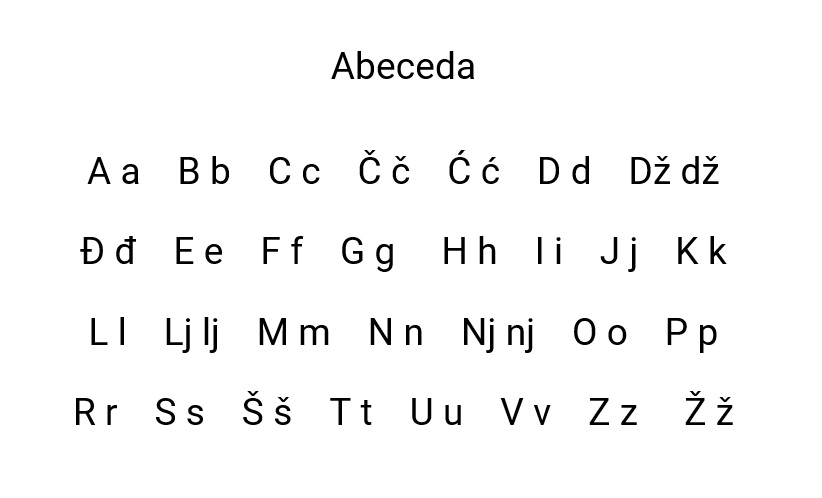
by Magdalena Petrovic Jelic
Founder of Serbonika
Serbian language teacher and entrepreneur, language lover and polyglot, but also a mother and a relentless storyteller.
On a mission to create the best web space for learning Serbian: Serbonika.

Serbian Alphabets Today
Throughout the years, there has been this idea that ćirilica is Serbian and latinica is Croatian. (I’d say that latinica is Latin and ćirilica is Slavic, for that matter!) However, I guess that Serbians got used to and adopted latinica much more than Croatians ever did ćirilica. When the countries split, ćirilica was completely rejected in Croatia, while we are continuing to learn and use both writing systems simultaneously and equally.
Serbia is an example of a digraphic country: our Constitution allows for both scripts (even though ćirilica is the official one), and our children learn to use both writing systems from the first grade.
That being said, one look at the Serbian reality will show you that latinica is used even more then ćirilica, both in the streets and (especially) online.
I made some photographs illustrating the simultaneous use of both writing systems. But I have to admit that I had to pick them carefully, because wherever I looked latinica mostly dominated in the streets.
For example, some traffic signs in Serbia are printed in both scripts, but many of them only in Latin.
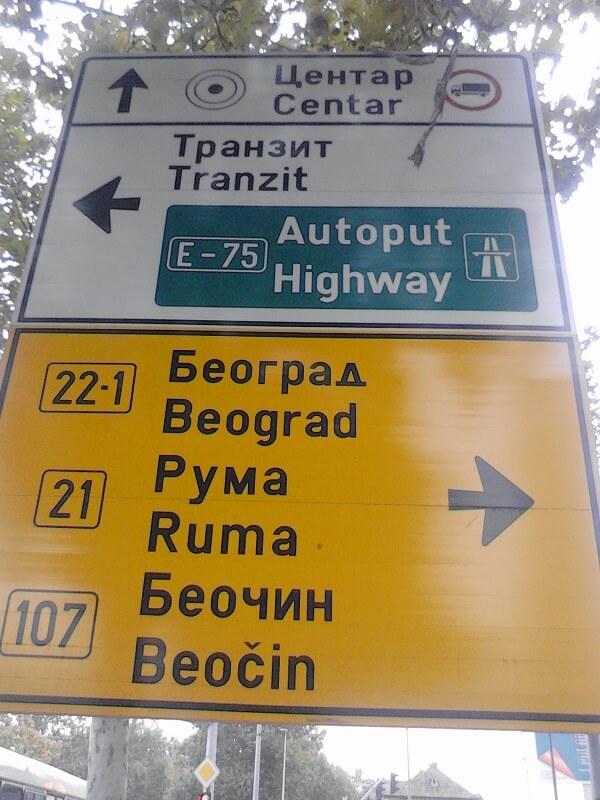
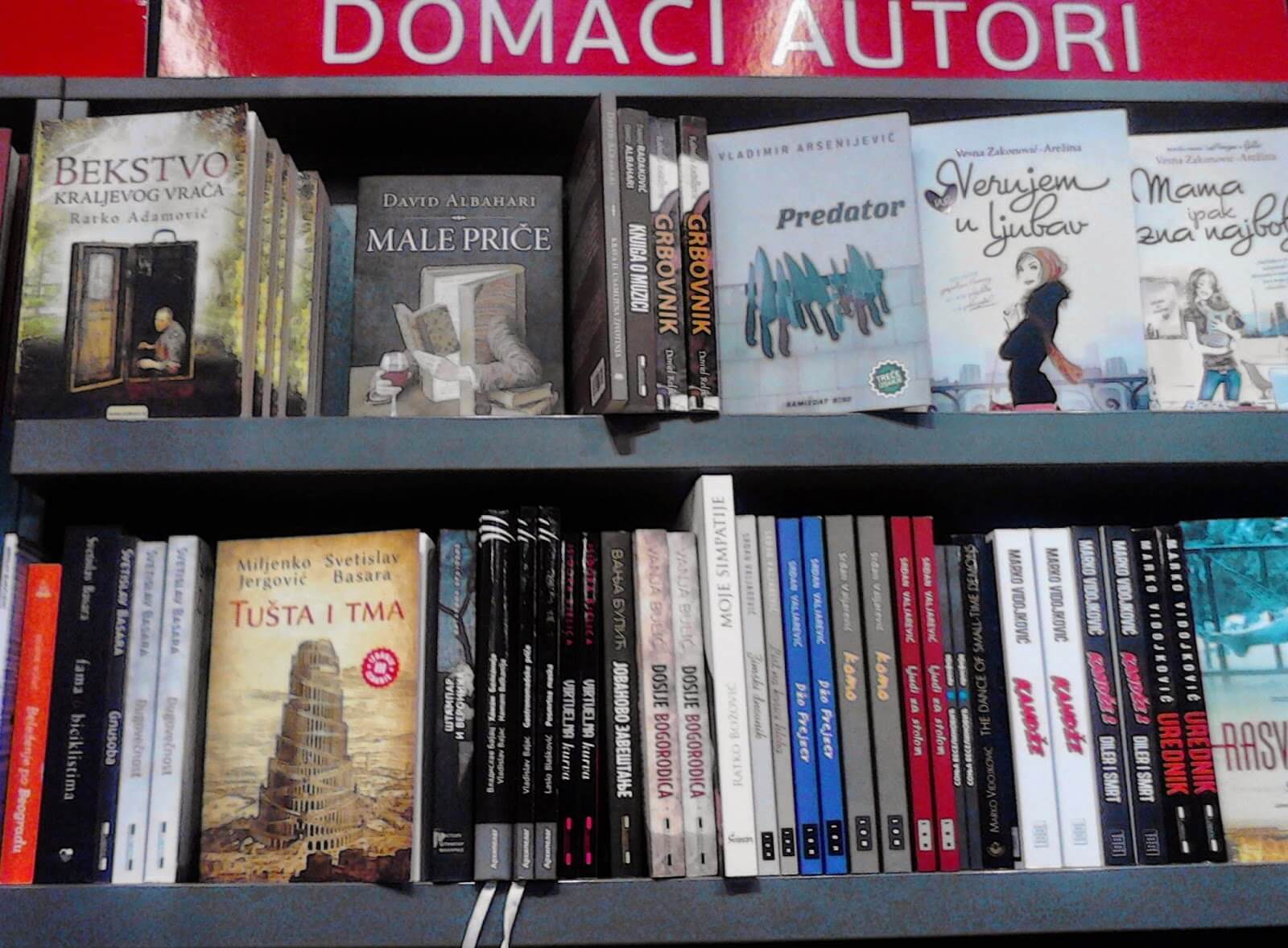
The books and magazines in Serbia are printed in both scripts, but during the last decades, they are published predominantly in the Latin script. Virtually only new editions of some Serbian classics may be found in Cyrillic.
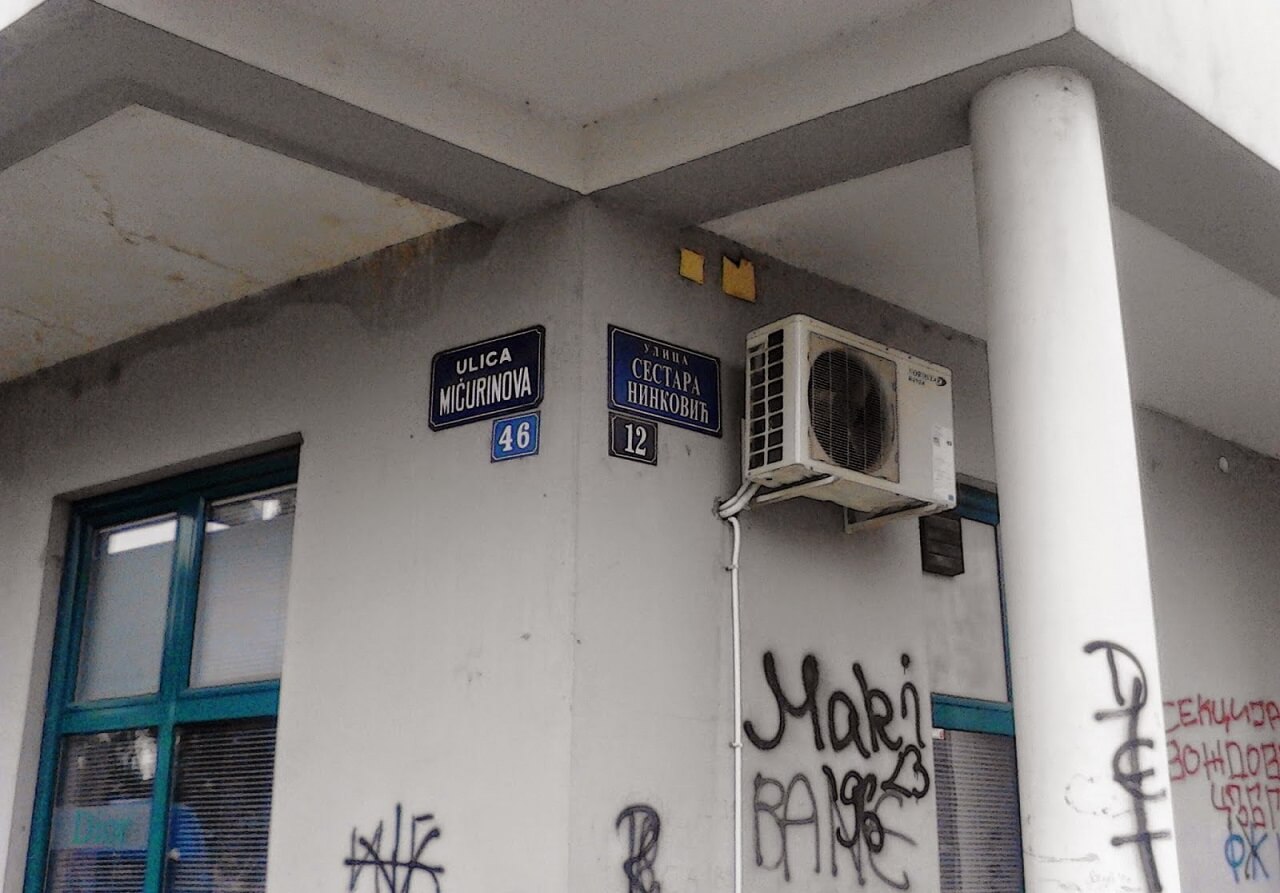
This one is my favourite! Here you can see the names of the two streets in Novi Sad, one next to another, in the two scripts, and several graffiti written in both scripts as well.
Should you learn both Serbian Alphabets, Latin and Cyrillic?
Not surprisingly, my advice is to learn both scripts. Have no second thoughts! They both work on the same principle, they even have some common letters.
Getting used to the Cyrillic script will take you some time and practice, but it is not difficult, really. And you will be proud when you start reading all the signs and ads in the Serbian streets with ease.
But if you also learn the handwritten or cursive styles of both Serbian alphabets, the feeling will be glorious: you will be able to read anything written in this part of the world.
Copyright © Magdalena Petrović Jelić 2014, 2018
Serbonika
Najbolja metoda za učenje srpskog jezika
The best method to learn Serbian
The Serbian Language: Complete Review in 9 Key Points
Common mysteries about the Serbian language solved: Do the Serbs understand Russian? Is Serbian the same as Croatian and Bosnian? Is Serbian grammar complex?
Vowels in Serbian: Phonetics and Pronunciation
In Serbian language there are only 5 vowels. That’s less then in English, French or German. Learn how to pronounce Serbian vowels properly.
New Year Traditions in Serbia: Why We Celebrate Twice
If you ever dreamed of celebrating Christmas and two New Year twice, Serbia is the best place for that. Do you know why Serbs have two new years? Learn about Christmas and New Year traditions in Serbia, customs, beliefs, greetings.
Typical Serbian gifts: How to be a good guest in Serbia
Learn what kind of presents you can bring to your Serbian hosts or friends. Otvaramo sezonu poklona – we’re opening the gifting season 🙂
